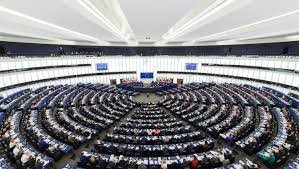The European legislative machinery may be complex, but it is surprisingly transparent. One of the key tools to influence it in the agricultural sphere are the so-called CDGs, or civil dialogue groups, which many of you know through reports of the EURAF executive committee.
Recently, the new European Commission used one of these groups, the CAP CDG, to introduce the new Commissioner, Janusz Wojciechowski, and key officials involved in the Farm to Fork Strategy, including Sabine Jülicher, leading that effort in DG SANTE, and Tassos Haniotis, the strategy director in DG AGRI. This was a perfect opportunity for us to influence the debate, and we did. The fact that the European Green Deal is encouraging farmers to depend less on inputs gave us plenty of openings to tout the biodiversity, pest control and soil fertility benefits of agroforestry. The Commissioner reacted by growing wistful about the mixed farming systems of his youth, calling upon his officials to figure out how to bring that into the modern era. Afterwards, the two heads of unit at DG AGRI responsible for policy and strategy came up to us, asking for additional information about agroforestry.
But this is Brussels, and in Brussels a standard tactic is for opponents to try to bury unwelcome news. So, imagine our surprise when, reviewing the draft minutes for the meeting, we saw the contributions of EURAF simply... missing!
We pointed out their “mistake”, added them back in, and the final minutes, which you can see here, now include the following: “EURAF argued that agroforestry, permanent crops, silvopasture and adaptive multi- paddock grazing have immense potential for mitigation, adaptation, biodiversity, productivity and animal welfare. These are management interventions that, collectively, are the top mitigation solution in the IPCC reports. But not being products, they are difficult for the private sector to research and sell and therefore should be publicly funded. Farmers need help and advice to implement necessary management changes;” and “agroforestry, EURAF stressed, offers crops effective resilience to droughts and storms, and sequesters significantly more carbon. Tree alleys in arable systems pick up excess nutrients, reducing water pollution. CAP should encourage adoption of techniques that minimize impact by analyzing the whole system: livestock operations, for example, should include the environmental impacts of growing imported feeds into account;” as well as “EURAF stressed that well-managed permanent pastures can be a net carbon sink.”
Let that be a reminder to all of us. When we attend a CDG or national lobbying event, our job doesn't finish when we file the report (the one for this CDG is here). We also need to have eagle eyes when the draft formal minutes come out, and correct them to ensure our points come through clearly. Onwards!












